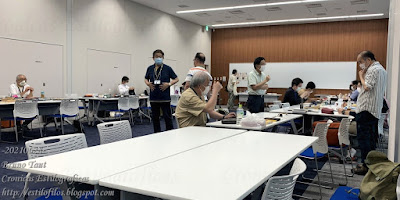Searching for information not much could I find. After all, not that many Japanese pens had a clear model name, and the actual description was the catalog reference. Consequently, those pens where Elite models with inset nibs. However, I also found the names Socrates and Newton (::1::, ::2::) associated to them.
Where did these names come from?
It might all come down to this Pilot advertisement from 1978:
 "Chosen by character." (https://pilot.co.jp/)
"Chosen by character." (https://pilot.co.jp/)
We should note that the Socrates pen on the ad corresponds to the black Elite pocket pen with triangular nib instead of that with the inset nib.
Then, based on that ad, we have three more names for pens: Cleopatra, Beethoven, and Nightingale.
The Beethoven is, obviously, the well-known Murex (ミュ-レクス).
The Cleopatra and the Nightingale belonged to the “Lady” series. But the Cleopatra had an additional name—Lady Pearl. (The reddish pocket pen I am showing here is NOT the Nightingale on the ad. My pen is a Elite model with many commonalities with Nightingale).
 A Pilot Elite very similar to the Nightingale Lady model shown on the ad. The only difference is in cap--different decoration, and the different name.
A Pilot Elite very similar to the Nightingale Lady model shown on the ad. The only difference is in cap--different decoration, and the different name.
And in view of all this, should we call the Murex as the Pilot Beethoven?
Anonymous 6-bu jumbo pen – Kobe Ginza Sepia Gold
Bruno Taut
September 2nd, 2021
etiquetas: Pilot, mercado
Bruno Taut
September 2nd, 2021
etiquetas: Pilot, mercado

























































